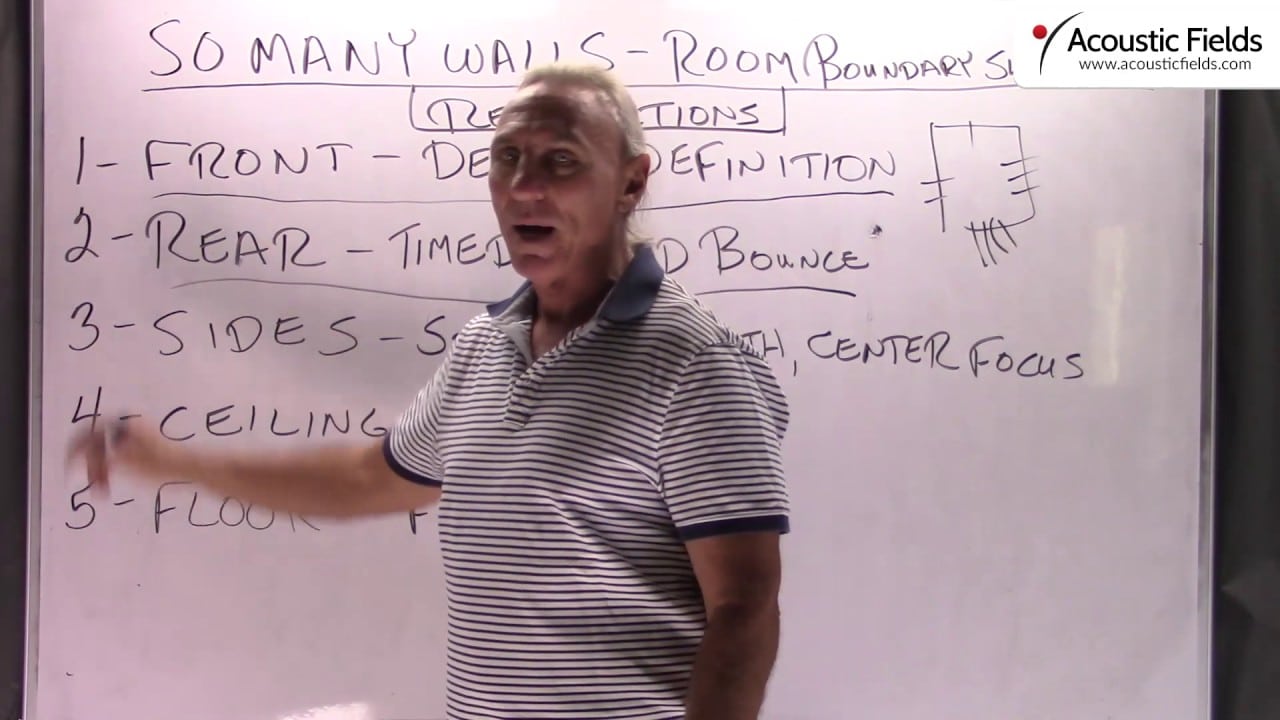Today we’re going to talk about so many walls, obviously the room boundary surfaces inside of our rooms play a big role in what we hear and it’s the reflections from those surfaces that we have to be concerned about.
If you if don’t think there’s any difference between the room boundary surfaces and what you hear in your system, take a couple speakers outside, set them up outside in a quiet area and listen to the music without a room, just the earth as your boundary surface. There’s a big difference so we have to be cognizant of all these boundary surfaces, we do because they all contribute to what we hear, we have to be really concerned. Front Wall – let’s do a little review. Depth and definition in our sound stage, you know that magical space between our speakers where if we’re professional we get everything in to be heard, hopefully translation and if we’re just playing back and listening to the music we want that emotional connection which means we have to hear everything that’s in the mix in order to connect to the music.
The Rear – we have that time delay bounce off the rear wall which messes with everything because we have the direct energy from our speakers and now we have competing reflected energy off the rear wall mixing with the direct so you can see what kind of nightmare that is.
The sides – that’s directly related to our sound stage width so the space between our speakers and then acoustically, psycho-acoustically our speakers disappear and we get a wider sound stage. So the sides are very important and rate and level of absorption on the side walls are very critical, you just can’t throw up any sound absorbing material on those side walls or the rear wall. You have to manage how much and what frequency you’re absorbing. Ceiling – first-order reflection and the floor, first-order reflection. Why? You’re sitting on the floor right, there’s the floor you can’t really get much closer to it. The ceiling isn’t too far away up here so those are first order reflections at the listening position.
So everything, you have all these reflections from all these boundary surfaces coming at you in real time so you have to be prepared, you have to have the proper defense so to speak so you have to treat these surface areas with the proper acoustical treatment so we can manage the reflections that more importantly the time signature of those reflections because it’s always a balance between the direct energy out of the speakers and the reflected energy from the side walls and all the other room boundary surfaces.
—
This is an unedited transcript from our video series from Acoustic Fields. There will be some errors in grammar and sentence structure that occur during this translation process.
For complete understanding and comprehension, please view the video which is included in this text. For any additional information regarding this topic or others relating to room acoustics, please contact us directly at:
P: 520 – 392 – 9486







